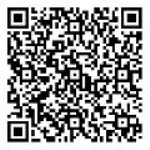期刊目錄列表 - 55卷(2010) - 【教育科學研究期刊】55(4) 十二月刊
 Directory
Directory
眼球追蹤技術在學習與教育上的應用
作者:陳學志(國立臺灣師範大學教育心理與輔導學系教授)、賴惠德(佛光大學心理學系副教授)、邱發忠(國防大學心理及社會工作學系副教授)
卷期:55卷第4期
日期:2010年12月
頁碼:39-68
DOI:10.3966/2073753X2010125504002
摘要:
本文目的為對眼球追蹤技術在學習與教育上的應用進行論述。人類的認知訊息處理歷程中有80%以上的訊息是由視覺獲得,而眼球運動也是認知過程中最為重要的感官訊息來源,近來發展的眼球追蹤技術提供了自然且即時的測量來探討認知、情緒、動機等議題,因此,眼球追蹤技術已經被廣泛地使用在各個領域中。本文針對眼球追蹤與眼球追蹤儀的基本概念、眼動指標、操作方法、資料分析方法等進行介紹。並針對眼動與閱讀、眼動與教學、眼動與問題解決及眼動與情意特質的運用等議題進行論述。藉由本文的介紹將使讀者對眼動研究在學習與教育上的應用有基本的認識。
關鍵詞:教育、眼球追蹤、跳視、學習、凝視時間
 《詳全文》
《詳全文》

Journal directory listing - Volume 55 (2010) - Journal of Research in Education Sciences【55(4)】December
 Directory
Directory
Eye Tracking Technology for Learning and Education
Author: Hsueh-Chih Chen(Department of Educational Psychology and Counseling, National Taiwan Normal University),Hwei-Der Lai(Department of Psychology, Fo Guang University),Fa-Chung Chiu(Department of Psychology and Social Work, National Defense University)
Vol.&No.:Vol. 55, No. 4
Date:December 2010
Pages:39-68
DOI:10.3966/2073753X2010125504002
Abstract:
The purpose of this article is to canvass the advantages of using eye-tracking technologies for applications in learning and education. More than 80% of the course of human cognitive processing is based on information acquired from visual modals. Eye movement plays an unrivaled role in inferring a given individual internal state. Recent developments in eye tracking technology have shown a powerful natural and real-time measuring for cognition, emotion, and motivation. This is evidenced from a wide range of reported studies and researches. We reviewed the representative research of reading, problem-solving, teaching, affect disposition, and other issues by displaying how eye-tracking technology can support advanced studies on mental processes. In addition, basic mechanical concepts, indicators, operation methods, and data analysis for the use of eye-tracking technology were introduced and discussed.
Keywords:education, eye tracking, saccade, learning, fixation time